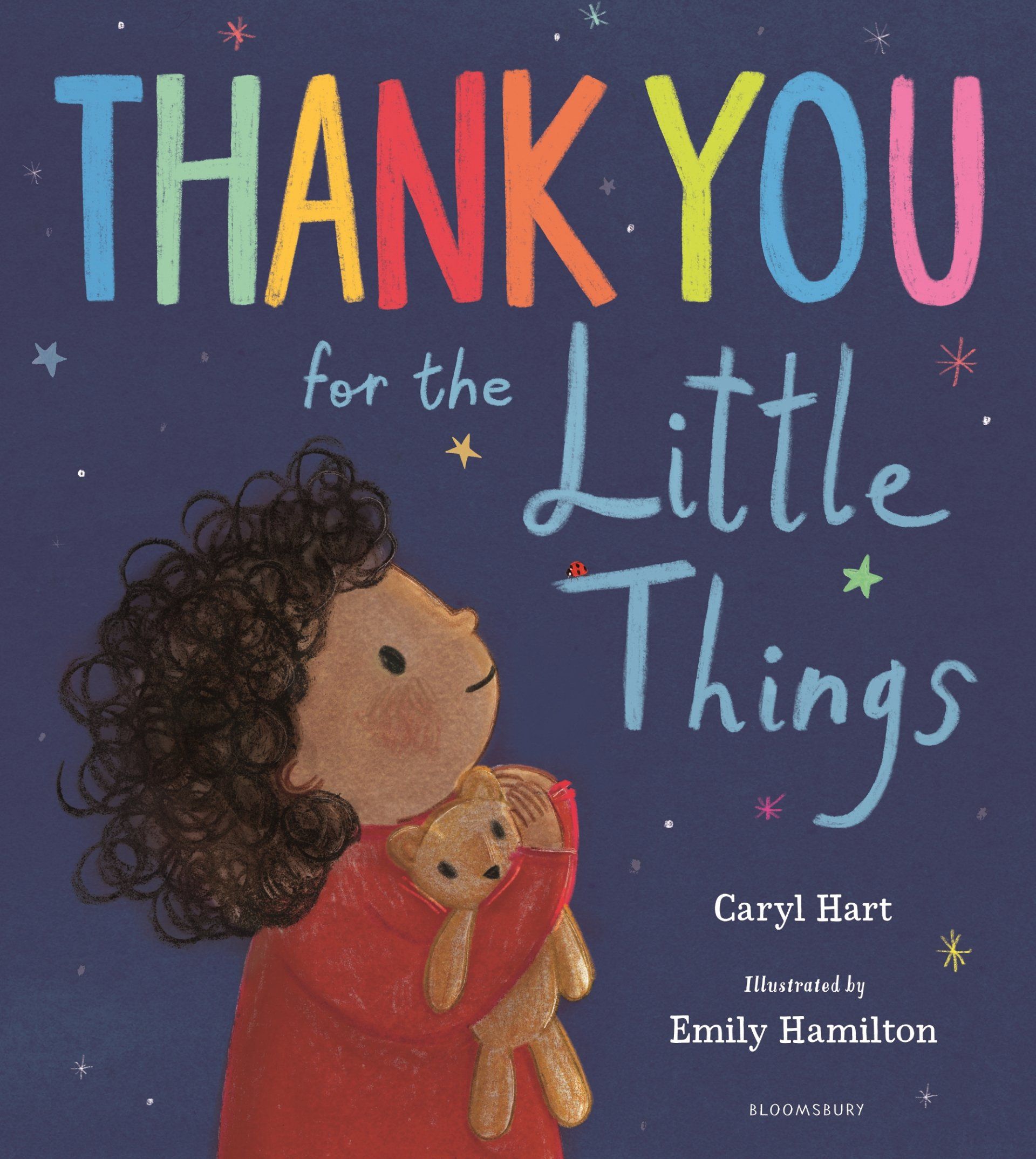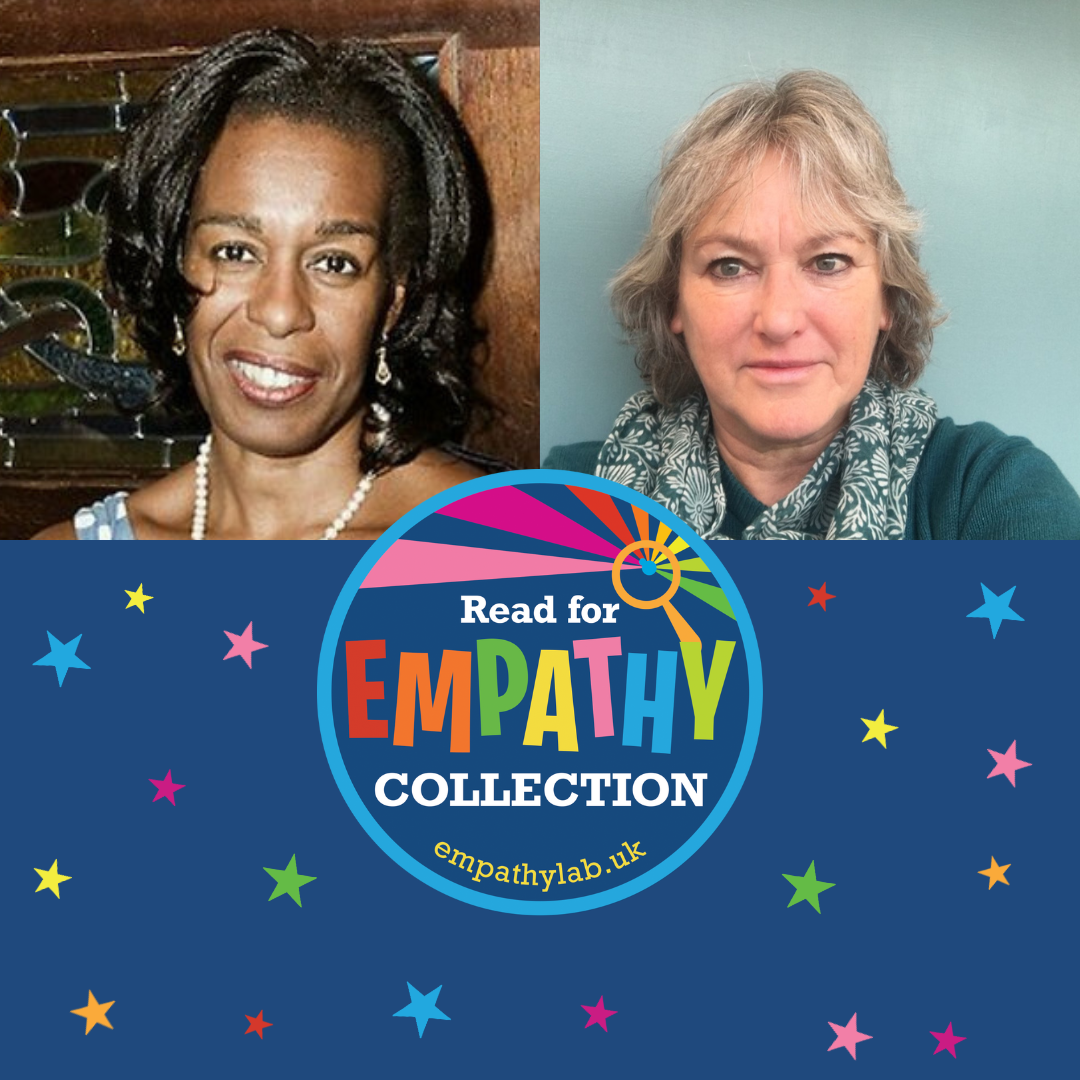Gratitude and empathy
- By EmpathyLab
- •
- 05 Mar, 2022
- •
Miranda McKearney, EmpathyLab founder, on celebrating the little things.

Because of my EmpathyLab work, I think a lot about the different ways a book can be empathy-building, and am very happy that EmpathyLab is a stop on the blog tour celebrating 'Thank you for the Little Things' by Caryl Hart and Emily Hamilton, published by Bloomsbury Children’s Books.
Its central theme is being thankful for the small (but crucial) things in life and as I write this, I’m reflecting that we’ve perhaps never felt more conscious of these in the face of what’s happening in Ukraine.
It seems to me that gratitude has a profound link to empathy and that this gorgeous book can help build children’s empathy skills in different ways.
It opens with a charming central character in a red jumper saying “whenever I am feeling sad or life feels hard or wrong or bad, I focus for a little while…on little things that make me smile”. The illustrations and carefully wrought text help children explore different emotions, and this is a key area for EmpathyLab’s work, because if you can’t identify your own feelings, it’s hard to share and connect with how someone else is feeling.
Gratitude often involves an element of perspective-taking, and this is another area of focus for us. Being able to see other people and creatures as separate to yourself, and to see their different experiences and perspectives on life is a crucial part of empathy. The central character expresses gratitude for a ladybird, a dog, a stick, bubbles that make a little sister laugh, and a teddy bear. The act of being grateful for these things involves being able to see them as separate “beings”, and the book is great for exploring perspective-taking with children
Thank you for the Little Things is a beautiful, gentle springboard for helping children think about their connection with others, and to take notice of what’s around them. We’re so lucky to have books of this quality which quietly help us nurture empathy in the rising generation.
Let’s celebrate the things we’re grateful for
Gratitude is a powerful, healing thing – so let’s all use the book’s publication to celebrate what we’re grateful for. I’m feeling grateful for the primroses in my garden and the fact that spring is unstoppable now
Miranda McKearney, Founder, EmpathyLab

The collection consists of 65 books for 3-16 year olds, each chosen for its unique contribution in building young people’s empathy.
The primary collection for 3-11 year has 40 books; the secondary collection features 25 books for 12-16 year olds.

I am very fortunate to have been on the Read for Empathy booklist judging panel over the past few years.
I’m also a practising classroom teacher so I would like to consider how the books on the list can influence what happens in a school.
Firstly, along with many other schools, reading aloud is an important part of our school day, every day, almost without fail. All the teachers at my school are aware of the EmpathyLab booklist, and often use it as a basis for choosing their next class read. Knowing that the books touch on important aspects of our children’s lives is key; we all understand how important representation is in stories. These are books that make a difference, that lead to passionate discussions in the classroom and can actually influence children’s behaviour .
The booklists become increasingly valuable. We have a couple of hundred empathy texts at our school – they are there on merit. Staff often refer to previous lists if there as a particular aspect of empathy that they want to include or share with the children.
Our Year 6 Reading Champions often seek out picture books from the list to take in to KS1 and Reception when they read stories, so we already have the next generation educating each other about the importance of empathy. I love the fact they often meet beforehand (they tend to work in twos) to discuss what questions they might want to ask the children once the story has been read. After each booklist is released, they also spend several of their Friday recommendation slots in assembly talking about a couple of the books. We have parents in on our Friday assembly so it’s a great way to share the texts with them and help raise their awareness of our work.
We often use the books as our teaching texts for English, partly because they encourage excellent writing but also because they provide a fantastic opportunity for our pupils to develop their empathy skills. The Wild Robot by Peter Brown, Miraculous Journey of Edward Tulane by Kate DiCamillo, Freedom by Catherine Johnson, Eyes that Kiss in the Corners by Joanna Ho and A Street Dog Named Pup by Gill Lewis are all books that have made in into our English curriculum as a result of being on one of the Read for Empathy booklists. Well, that’s not strictly true - Edward Tulane was there before that as it’s one of my favourite ever books, but you hopefully take my point.
Reflecting on our empathy journey over the past few years, I’ve also found that the more books children read that address empathy, where they can relate to the characters and their choices, the more books they want to read. It’s almost a virtuous circle. Many begin to realise that such books can empower them to think about situations.
For example, as soon as we finished A Street Dog Named Pup last year, several of them immediately wanted to read other books by Gill Lewis. Because empathy is a thread that runs through much of her work ( Gorilla Dawn , Moon Bear , The Closest Thing to Flying and so on). Thanks to EmpathyLab's lists, I was able to point them in the direction of several other books, by her and others.
I think we agree that teaching children about empathy and providing them with opportunities to develop it is one of the most important gifts we can give them as adults. The fact that empathy has gone from being something that schools sort of understood a few years ago to being something that has got an increasingly solid evidence base is crucial.
There’s always been anecdotal evidence that reading stories is important for children and that it can change how they think but now that’s backed up with research. The empathy revolution (and it is a revolution) is only going to pick up more momentum over the next few years as the need for it becomes ever more apparent. Working in schools and in the world of children’s books means that we’re in the front line. There’s nowhere else I’d rather be.
